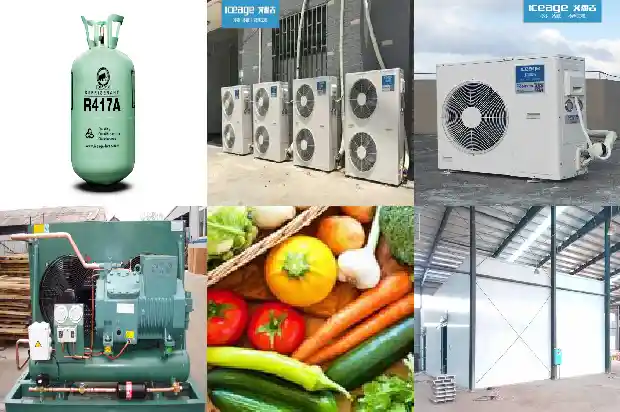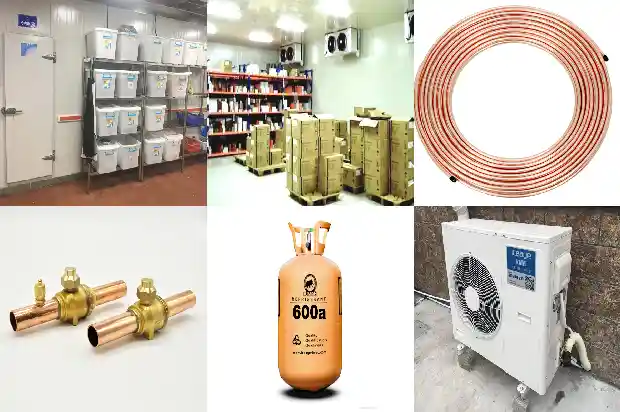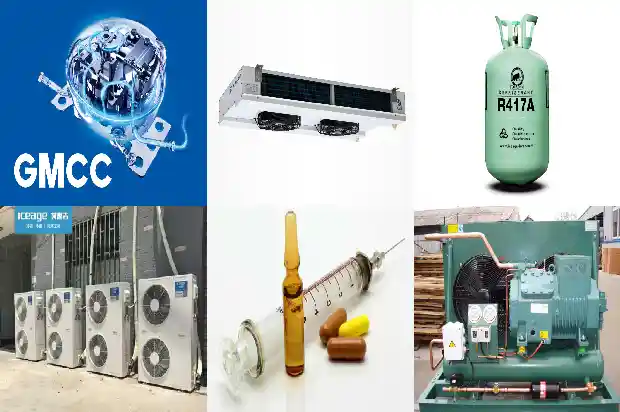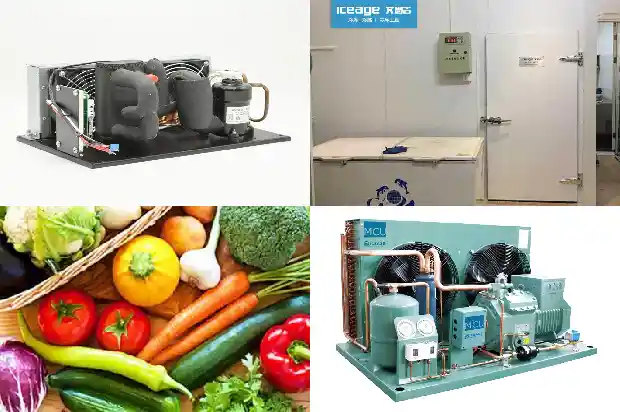Both are dual - connected systems. How to choose between air - fluorine - ground - water and air - water - ground - water systems after all?
2024-12-22
As the two-in-one heating and cooling system market advances steadily, the two mainstream systems in the two-in-one heating and cooling market nowadays are the "fluorine in air and water on ground" system and the "water in air and water on ground" system. Since both are two-in-one heating and cooling systems, how should we choose between the "fluorine in air and water on ground" system and the "water in air and water on ground" system when decorating?
First of all, let's understand the concept:
The "central air conditioning + floor heating" two-in-one heating and cooling system is the fourth generation following the first-generation window air conditioners, the second-generation wall-mounted air conditioners (cabinet air conditioners, duct air conditioners), and the third-generation central air conditioners. Its characteristic is that one machine has two functions.
That is, it can serve as a cold source for air conditioning in summer and as a heat source for the floor heating system in winter, achieving the effect of being warm in winter and cool in summer, replacing the traditional home system mode of "central air conditioning for cooling + wall-mounted boiler for heating".
This system is also praised by industry experts as the "revolution of the heat source for heating + the revolution of the terminal for cooling".
To put it simply, the demand for air conditioning and floor heating is met through a heat pump host device. Its operation energy requirement is electricity, and electricity only plays the role of a porter here, which is different from our common understanding, such as directly using electricity to heat water in winter.
In summer operation, the heat pump host transfers heat from indoors to the outdoor air. In winter operation, on the contrary, it transfers the heat in the outdoor air to the indoors. Currently, among air source heat pumps, the energy efficiency ratio of American brands can almost reach 3, that is, one kilowatt-hour of electricity can generate the heat equivalent to that produced by three kilowatt-hours of electricity.
The "central air conditioning + floor heating" two-in-one heating and cooling system is the fourth generation following the first-generation window air conditioners, the second-generation wall-mounted air conditioners (cabinet air conditioners, duct air conditioners), and the third-generation central air conditioners. Its characteristic is that one machine has two functions.
That is, it can serve as a cold source for air conditioning in summer and as a heat source for the floor heating system in winter, achieving the effect of being warm in winter and cool in summer, replacing the traditional home system mode of "central air conditioning for cooling + wall-mounted boiler for heating".
This system is also praised by industry experts as the "revolution of the heat source for heating + the revolution of the terminal for cooling".
To put it simply, the demand for air conditioning and floor heating is met through a heat pump host device. Its operation energy requirement is electricity, and electricity only plays the role of a porter here, which is different from our common understanding, such as directly using electricity to heat water in winter.
In summer operation, the heat pump host transfers heat from indoors to the outdoor air. In winter operation, on the contrary, it transfers the heat in the outdoor air to the indoors. Currently, among air source heat pumps, the energy efficiency ratio of American brands can almost reach 3, that is, one kilowatt-hour of electricity can generate the heat equivalent to that produced by three kilowatt-hours of electricity.
Today, we will share with you about these two types of products from several aspects:
- Form comparison
The host exchanges heat through Freon to produce ice water or hot water, and then transports the cold water or hot water to the indoor fan coil units through PPR water pipes. In winter, the hot water obtained through heat exchange is transported to the floor heating coils, and the host needs to be equipped with a buffer water tank.
Fluorine in air and water on ground
The host directly transports the refrigerant to the indoor air conditioner through Freon, and copper pipes are used indoors. In winter, Freon is used to heat the cold water and then transport it to the floor heating coils. - Comfort
Water in air and water on ground
Since the "water in air and water on ground" system also realizes heat exchange through Freon, the outlet temperature of the water chiller is between 15 and 20 degrees Celsius. Due to this temperature, in order to cool down the room, the working principle of the water chiller is to have a small temperature difference and a large air volume.
Based on this working principle, the advantages and disadvantages of the water chiller will appear simultaneously. The biggest advantage, which is also its trump card, is that the outlet air is soft and not dry.
Fluorine in air and water on ground
The "fluorine in air and water on ground" system directly transports the refrigerant indoors without secondary heat exchange, so the outlet temperature is between 7 and 12 degrees Celsius. Therefore, the working principle of the "fluorine in air and water on ground" system is to have a large temperature difference and a small air volume. - Energy efficiency
In terms of energy efficiency, the two systems are almost the same in winter heating.

Both are very energy-efficient and represent a future trend. Compared with boilers and electric floor heating, they can save more than 50% of energy. Of course, when it comes to the 细分 of each product, that's another story.
When it comes to cooling in summer, the "fluorine in air and water on ground" system should be more energy-efficient. Because the "fluorine in air and water on ground" system has no secondary heat exchange, and the variable-frequency water pump configured for the machine itself has a power of about 50 - 70 watts, which is relatively energy-efficient. The "water in air and water on ground" system needs to undergo secondary heat exchange, and the fixed-frequency water pump configured for the machine itself has a relatively large power, with a common power range of 370 - 550 watts or even higher.
However, the water system has an advantage.
For customers with the same house type, due to the problem of oversizing ratio, the host of the "fluorine in air and water on ground" system needs to be selected as 7 horsepower, while the "water in air and water on ground" system can choose to operate with 5 horsepower, and a smaller host can be selected. So in terms of energy usage and cost savings, the difference is actually not big and can be almost negligible. The absolute advantage of the two-in-one heating and cooling system still lies in winter heating.
- System stability
From the perspective of safety, both the "fluorine in air and water on ground" system and the "water in air and water on ground" system are safe. The key point of the two-in-one heating and cooling system is to choose a reliable HVAC (heating, ventilation, and air conditioning) company. The requirements for installation and design are very high. For this thing, it's "easy for those who know how, difficult for those who don't".
The advantage of the "water in air and water on ground" system is its openness. That is to say, after buying the equipment, the intermediate pipes and control valves can be designed according to the habits of the HVAC company.
The "fluorine in air and water on ground" system is relatively uniform. Manufacturers will stipulate the hydraulic center, fixed installation accessories, and design requirements. However, both systems are quite mature, and the key is still to choose a professional and reliable HVAC company.
Consumers also have different hobbies and preferences during the purchasing process. Just choose what you think is appropriate. Finally, it is also necessary to choose a professional HVAC company to complete the installation.
Related Articles
- Essential for Maintenance! Parameters and Phenomena of Normal Operation of Refrigeration and Heating Systems
- Introduction to Control Valves in Refrigeration Systems
- What Are the Differences Between R22 and R404A Cold Storage Systems?
- Selection of Bypass Control Valves for Air - conditioning Water Systems
- Basic Knowledge of Valve - type Components in Refrigeration Systems (Technical Sharing)
- Maintenance Techniques for Air - conditioning Refrigeration Systems
- How to Select and Use Water Pumps for Air - conditioning Systems?
- Essential Basics for Maintenance, Debugging of Refrigeration and Air - conditioning Systems
- Operating Principle and Standard Installation Steps of Multi - split Systems in Refrigerant Air - conditioning Systems
- How to Make Refrigeration Systems More Energy - Efficient?
- Analysis of 6 Components in Air - cooled Multi - split Systems
- Introduction to Various Water Tanks in Air - conditioning Systems
- Knowledge, Installation and Maintenance of Cold Storage Systems
- Top Ten Components of Refrigeration Systems and Five Common Troubleshooting!
- Refrigeration Technology Sharing - Commissioning of Refrigeration Systems
- New Technology: A New Control Method for Throttle Valves in Refrigeration Systems
- Introduction to Six Kinds of Two-stage Compression Refrigeration Systems
- The Significance of Subcooling Degree in Refrigeration Systems and Methods for Achieving Subcooling
